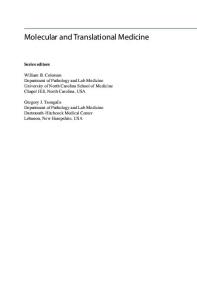COVID-19: Current status, Challenges and Future Perspectives
- PDF / 151,457 Bytes
- 2 Pages / 595.276 x 790.866 pts Page_size
- 65 Downloads / 387 Views
EDITORIAL
COVID-19: Current status, Challenges and Future Perspectives Rajendra Prasad1
Ó Association of Clinical Biochemists of India 2020
Coronavirus disease 2019 (COVID-19) was emerged in the Wuhan City, Hubei Province of Central China in December 2019 and subsequently has rapidly spread to most of the countries worldwide [1]. To date (2nd August, 2020), Covid-19 caused 17,680,523 confirmed cases and 680,894 deaths in 216 countries as per WHO report as well as also declared as a Public Health Emergency of International Concern (PHEIC). Strikingly, no vaccine as well as effective therapeutic drugs are available in the International market. In view of these facts, there is an urgent need for a better understanding of SARS-COV-2 virus [severe acute respiratory syndrome; previously known as 2019 novel coronavirus (2019-nCoV)] in order to develop any effective vaccines or molecules against COVID-19. Coronaviruses (CoVs) are positive sense, single stranded RNA viruses of the family coronaviridae that infect a wide host range to produce disease ranging from common cold to severe/fatal illness [2]. The SARS-COV-2 genome consists of 30 kb in size encodes a large non-structural polyprotein (ORF1a/b) which is further proteolytically cleaved to generate 15/16 proteins, 4 structural proteins and 5 accessory proteins. The four structural proteins consists of the spike (S) surface glycoprotein, the membrane (M) protein, the envelope (E) protein and the nucleocapsid (N) protein which are essential for SARS-CoV-2 assembly and infections [3, 4]. The spike surface glycoprotein plays a key role in its attachment to host cells. The receptor binding domain (RBD) of the S1 subunit undergo as hinge
& Rajendra Prasad [email protected] 1
Department of Biochemistry, M.M. Institute of Medical Sciences and Research (MMIMSR), Maharishi Markandeshwar University (MMU), Mullana, Ambala, India
like conformational transition which led to hide or expose the determinants of receptor binding [5, 6]. S protein is considered the major target for designing CoV antiviral therapies, For instances, S protein inhibitors, S cleavage inhibitors, neutralizing antibodies, RBD-ACE-2 blockers, Si RNA fusion core blockers and protease inhibitors [7]. Presently, Scientists are actively working towards the development of suitable vaccine candidate and effective therapeutic molecules for controlling the deadly Covid-19 owing to no effective vaccine or specific antiviral drugs against it. Vaccine Research Center (VRC) of the National Institute of Allergy and Infectious Disease (NIAID), National Institute of Health (NIH) are developing a vaccine candidate expressing SARS-CoV-2 S protein in the mRNA vaccine platform technology which is under clinical trials [8]. Passive immunization through direct administration of monoclonal antibodies (mAbs) may play an effective role in CoV control as an intervention in exposed individuals. It has been observed that patients recovering from SARS display potent neutralizing antibody response [9]. The main measures in clinical
Data Loading...











